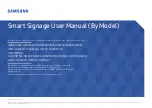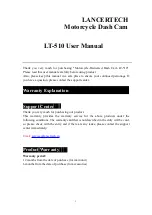
Cheetah Python Cameras User Manual | CoaXPress (CXP) Interface
August 27, 2019
Page
66
of
86
Rev 1.0
-
10
µ
s,
50
µ
s,
100
µ
s, or
500
µ
s de-bounce interval.
-
1.0
ms,
5.0
ms,
10.0
ms de-bounce interval.
•
Exposure Time
– the exposure for all frames can be set in two ways:
-
Pulse Width
– the trigger pulse width (duration) determines the exposure
subject to limitations.
-
Internal
– the camera internal exposure register determines the exposure.
1.
The de-bounce interval MUST be smaller than the trigger pulse duration. Adjust
the interval accordingly.
2.
When Triggering Pulse Width is enabled, Internal Exposure timing is not active.
Triggering Modes
Exposure Control
With trigger mode enabled, you can set the exposure time using either the internal
exposure timer or the trigger pulse width.
In trigger mode, the camera idles and waits for a trigger signal. Upon receiving the trigger
signal, the camera starts integration for the frame, then completes the integration, and
reads out the image. If the next trigger occurs prior to completion of the readout, the
camera will overlap the exposure and readout (
and
). You can set the
exposure time manually using either the internal exposure register setting or the duration
of the trigger pulse. Upon completing the readout, the camera idles while
awaiting the next
trigger pulse.
Trigger
Exposure time
Exposure N
Exposure N+1
N
N+1
Read-out N
Read-out N+1
Read-out time
Ignored
Figure 40:
“Fast” Trigger Mode (Internal Exposure Control)
Trigger
Exposure time
Exposure N
Exposure N+1
N
N+1
Read-out N
Read-out N+1
Read-out time
Figure 41:
“Fast” Trigger Mode (Pulse Width Exposure Control)
When using the internal exposure timer, if the next trigger activates prior to the completion
of the previous exposure, the camera ignores it.
CAUTION !
CAUTION !
















































